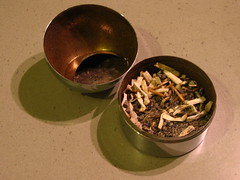Can-C Eye drops represent a huge breakthrough in the treatment of cataracts. Until now the only way in which to treat cataracts has been to undergo cataract surgery. Although these days such surgery is very routine, quick (usually under 30 minutes duration) and requires very little sedation or recovery time, it is still none the less an invasive surgical procedure that inevitably carries with it a degree of risk.
But now, with Can-C Eye drops, you have a choice - a very real alternative to potentially risky, expensive surgery. Carnosine Eye Drops contain a unique formula that has been approved and patented by Innovative Vision Products, the company founded by Dr Mark Babizhayev from the Moscow Helmholtz Research Institute of Eye Diseases the original pioneer of this incredible product. Used daily, they have been proven to gently but effectively halt and even reverse the development of cataracts.
The key to their success lie in the fact that Can-C Eye drops contain carnosine. But these are no ordinary carnosine eyedrops. The Can-C eye drops formula is based upon a form of carnosine called N-acetylcarnosine which acts as a “carrier” of carnosine allowing it to be delivered directly into the aqueous humor of the eye (the fluid that surrounds the lens of the eye). This is critically important because it is in the lens of the eye that cataracts form.
Carnosine is effective against cataracts because it is known to be an important anti-glycation agent. The process of glycation involves sugar molecules bonding with proteins without the controlling action of enzymes. It occurs naturally in the lens of the eye and the process is central to the formation of cataracts. The lens of the eye is essentially made up of water and proteins. The proteins are arranged in a very specific way that keeps the lens clear and allows light to pass through it. Glycation results in damage to these proteins and it is this that ultimately leads to the development of cataracts.
By preventing glycation, carnosine can stop the destructive process dead in its tracks thereby halting and reversing the formation of cataracts.
Carnosine also acts as a powerful anti-oxidant which provides protection against free radical damage- also significantly associated with the formation of cataracts.
The effects of Cataract Eye Drops are so dramatic that even after just 1 month changes are clearly visible. Damaged proteins are broken down and melt away - an effect known as "melting snow". The process starts at the periphery and gradually works towards the centre of the cataract with vision gradually improving all the time.
Can-C Eye drops - the real alternative to cataract surgery.
Resource - Carnosine Eye Drops – The Key to Success for the Treatment of Cataracts
But now, with Can-C Eye drops, you have a choice - a very real alternative to potentially risky, expensive surgery. Carnosine Eye Drops contain a unique formula that has been approved and patented by Innovative Vision Products, the company founded by Dr Mark Babizhayev from the Moscow Helmholtz Research Institute of Eye Diseases the original pioneer of this incredible product. Used daily, they have been proven to gently but effectively halt and even reverse the development of cataracts.
The key to their success lie in the fact that Can-C Eye drops contain carnosine. But these are no ordinary carnosine eyedrops. The Can-C eye drops formula is based upon a form of carnosine called N-acetylcarnosine which acts as a “carrier” of carnosine allowing it to be delivered directly into the aqueous humor of the eye (the fluid that surrounds the lens of the eye). This is critically important because it is in the lens of the eye that cataracts form.
Carnosine is effective against cataracts because it is known to be an important anti-glycation agent. The process of glycation involves sugar molecules bonding with proteins without the controlling action of enzymes. It occurs naturally in the lens of the eye and the process is central to the formation of cataracts. The lens of the eye is essentially made up of water and proteins. The proteins are arranged in a very specific way that keeps the lens clear and allows light to pass through it. Glycation results in damage to these proteins and it is this that ultimately leads to the development of cataracts.
By preventing glycation, carnosine can stop the destructive process dead in its tracks thereby halting and reversing the formation of cataracts.
Carnosine also acts as a powerful anti-oxidant which provides protection against free radical damage- also significantly associated with the formation of cataracts.
The effects of Cataract Eye Drops are so dramatic that even after just 1 month changes are clearly visible. Damaged proteins are broken down and melt away - an effect known as "melting snow". The process starts at the periphery and gradually works towards the centre of the cataract with vision gradually improving all the time.
Can-C Eye drops - the real alternative to cataract surgery.
Resource - Carnosine Eye Drops – The Key to Success for the Treatment of Cataracts









